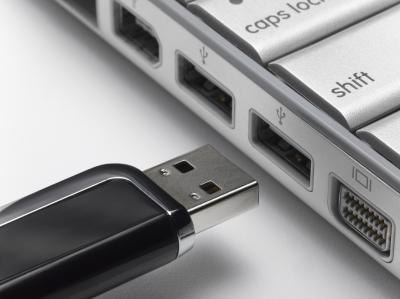Due
to the growing popularity of portable devices, memory cards have become
ubiquitous in consumers' daily lives. From smartphones to digital
cameras and even portable video game consoles, many different devices
now require you to purchase flash memory cards in one of 25 various and
incompatible formats. Thus, it not surprising that manufacturers have
designed adapters to help you transfer the contents of those cards
between devices or onto a computer.
-
Memory Cards
Flash memory cards contain a chip that stores data on digital cameras, as well as smartphones, gaming consoles and MP3 players. Memory cards also can handle data transfer between computers, although USB flash drives more frequently perform that job. If you need a device to read the contents of a card format it doesn't support, such as when transferring pictures from a new camera to an older computer, a memory card adapter facilitates that process.Card-to-Card
Priced at less than $5 at electronics or camera retailers, card-to-card adapters make it possible to plug a memory card into a slot originally designed for another, larger type of card. For example, the MicroSD and MicroSDHC to SD adapter from Sandisk lets you insert MicroSD or MicroSDHC cards into Secure Digital slots.The NEON MicroSD to Memory Stick PRO Duo Dual slot adapter enables MicroSD cards in devices that normally require Memory Stick Pro Duo cards. Another adapter, Semco's ESDCFII: Extreme MMC, SDHC, SD to CF Type II, lets you insert Extreme MultiMediaCards, in addition to SDHC and SD cards, into CompactFlash II slots.External USB
External USB adapters are small devices that plug into a USB port on your laptop or desktop computer. Most have more than one type of memory card slot so you can, for example, connect your camera's CompactFlash cards and the Memory Sticks from your PlayStation Portable console.After you plug an external adapter into a USB port, any card inserted into it will appear as an extra drive in Windows Explorer, the native application that manages your computer's drives and files. A new window, known as AutoPlay, will automatically open and let you to perform certain tasks automatically, such as play songs or view pictures stored on the card.Typical models of external USB adapters, which generally retail for under $10, include the Kingston 19-in-1 USB 2.0 Flash Memory Card Reader FCR-HS219/1; the IOGEAR 12-in-1 USB 2.0 Pocket Flash Memory Card Reader/Writer GFR209; and the Transcend P5 9-in-1 USB 2.0 Flash Memory Card Reader TS-RDP5K. These models, respectively, enable your computer to read 19, 12 or nine different memory card formats.Internal Desktop Computer
Overshadowed by the popularity of external USB adapters, internal adapters go inside a standard desktop computer, and range from a Peripheral Component Interconnect plugged directly in a motherboard slot to Integrated Drive Electronics readers attached to your motherboard by a flat, ribbon-like IDE cable that's traditionally used by older hard drives and CD or DVD drives.In addition to requiring some basic technical know-how for installation, internal adapters typically let you insert memory cards into slots below or above your CD or DVD drive, which may be less accessible than an external adapter sitting on your desk.Internal adapters usually cost less than $20 and include the Sony MRW620/U1/181 Internal 17-in-1 Memory Card Reader/Writer; the Sabrent 64-in-1 Multi Flash Media Card Reader (CRW-UINB); and the Rosewill RCR-AK-IM5002 USB2.0 75-in-1 Internal Card Reader.PCMCIA
The Personal Computer Memory Card International Association Card format, now shortened to PC Card, is a type of slot often seen on laptops produced before 2008. With the advent of fast USB2 and USB3 connections, however, laptop manufacturers stopped integrating PCMCIA slots into new models.A PC Card adapter looks like an oversized credit card and allows you to insert a memory card directly into a PCMCIA slot. This can be particularly convenient if your laptop doesn't have USB 2.0 connectors -- the PCMCIA technology that supports faster transfer rates.Most PC Card adapters cost between $20 and $50, depending on the manufacturer and the type of cards they support. Common models include the SanDisk 6-in-1 PC Card Adapter; the Sony PCMCIA Memory Stick(R) Reader, which only reads Memory Sticks; and the Sandisk SDAD109A11 Digital Media Memory Card to Express Slot Adapter, which supports seven common memory card formats.









